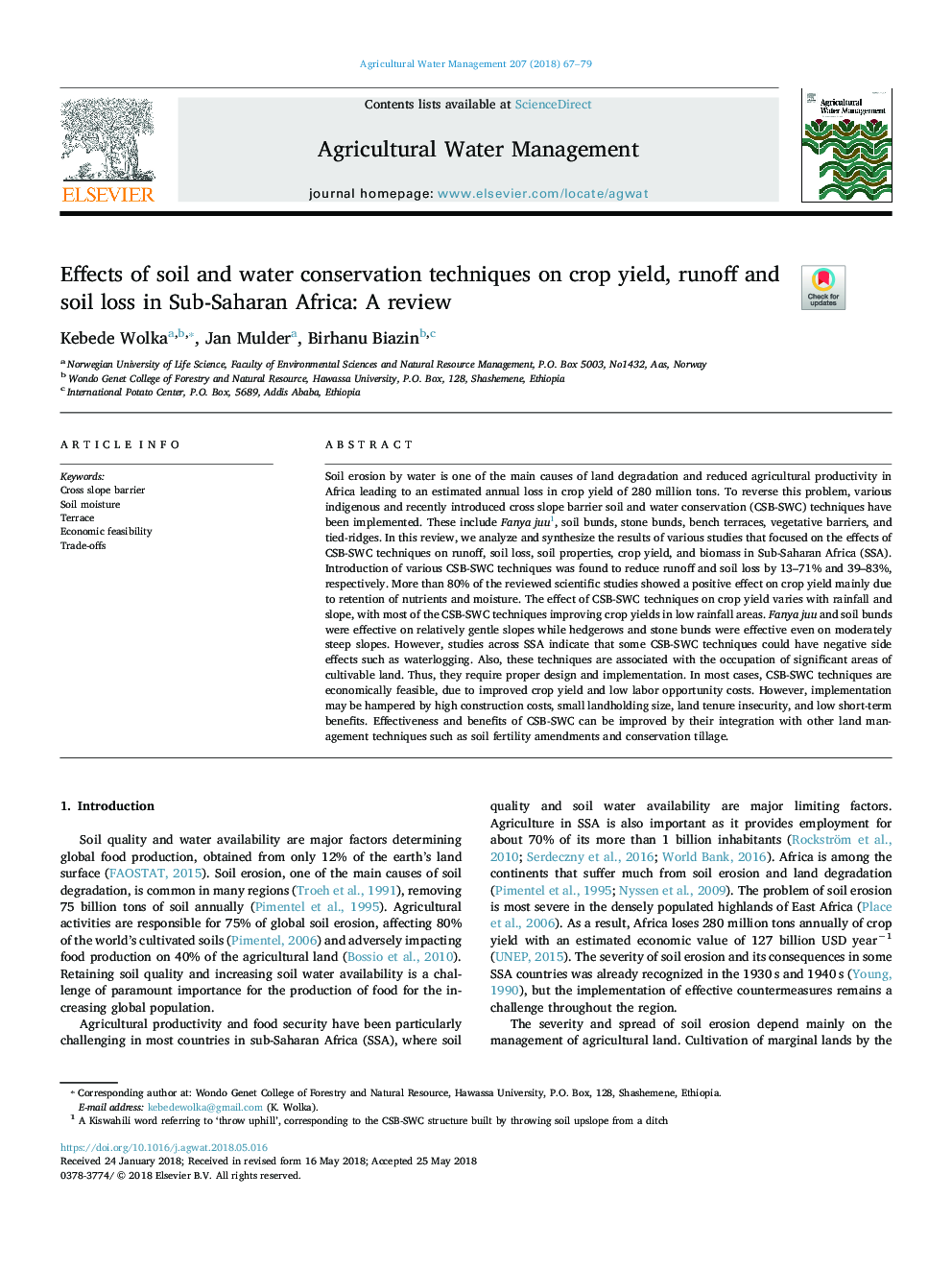| Article ID | Journal | Published Year | Pages | File Type |
|---|---|---|---|---|
| 8872832 | Agricultural Water Management | 2018 | 13 Pages |
Abstract
Soil erosion by water is one of the main causes of land degradation and reduced agricultural productivity in Africa leading to an estimated annual loss in crop yield of 280 million tons. To reverse this problem, various indigenous and recently introduced cross slope barrier soil and water conservation (CSB-SWC) techniques have been implemented. These include Fanya juu1, soil bunds, stone bunds, bench terraces, vegetative barriers, and tied-ridges. In this review, we analyze and synthesize the results of various studies that focused on the effects of CSB-SWC techniques on runoff, soil loss, soil properties, crop yield, and biomass in Sub-Saharan Africa (SSA). Introduction of various CSB-SWC techniques was found to reduce runoff and soil loss by 13-71% and 39-83%, respectively. More than 80% of the reviewed scientific studies showed a positive effect on crop yield mainly due to retention of nutrients and moisture. The effect of CSB-SWC techniques on crop yield varies with rainfall and slope, with most of the CSB-SWC techniques improving crop yields in low rainfall areas. Fanya juu and soil bunds were effective on relatively gentle slopes while hedgerows and stone bunds were effective even on moderately steep slopes. However, studies across SSA indicate that some CSB-SWC techniques could have negative side effects such as waterlogging. Also, these techniques are associated with the occupation of significant areas of cultivable land. Thus, they require proper design and implementation. In most cases, CSB-SWC techniques are economically feasible, due to improved crop yield and low labor opportunity costs. However, implementation may be hampered by high construction costs, small landholding size, land tenure insecurity, and low short-term benefits. Effectiveness and benefits of CSB-SWC can be improved by their integration with other land management techniques such as soil fertility amendments and conservation tillage.
Related Topics
Life Sciences
Agricultural and Biological Sciences
Agronomy and Crop Science
Authors
Kebede Wolka, Jan Mulder, Birhanu Biazin,
